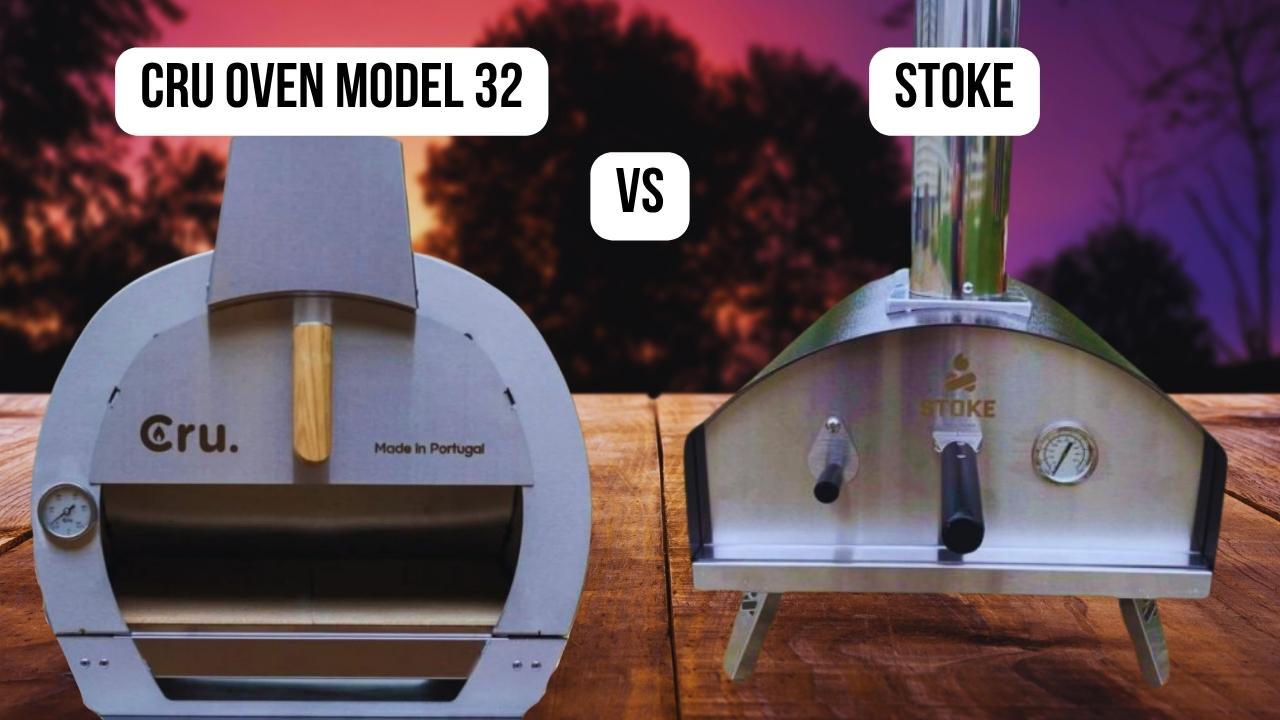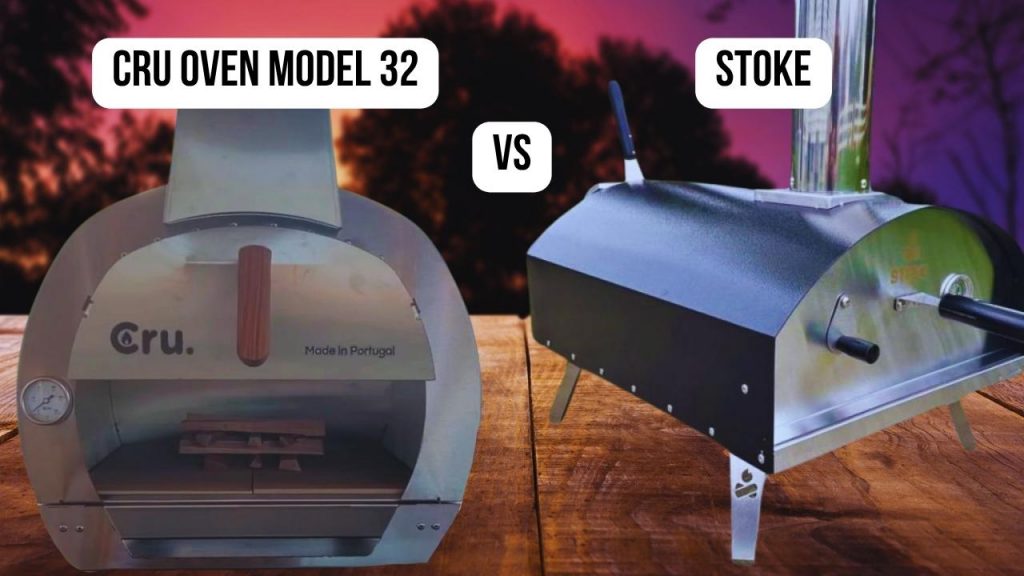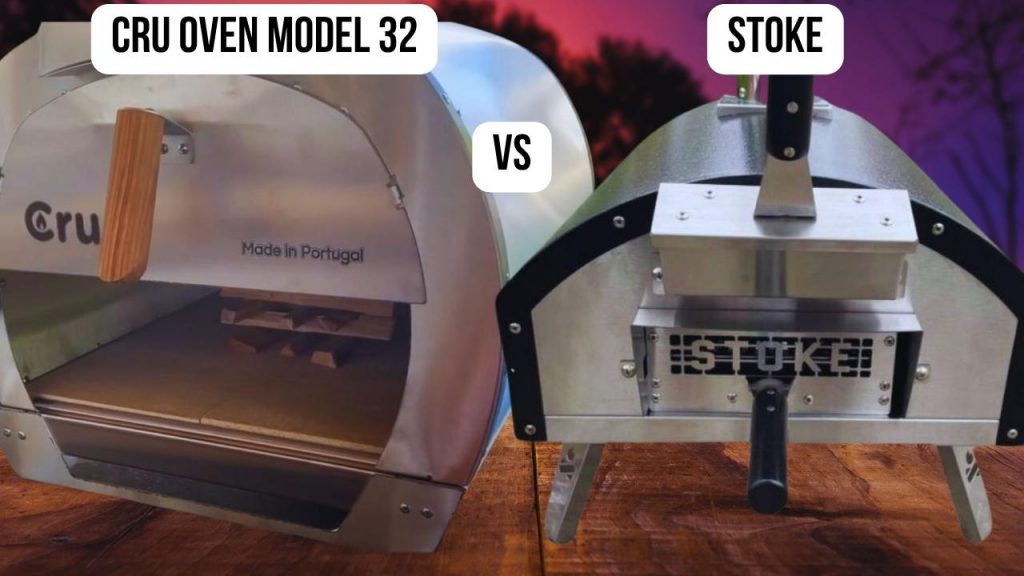As a restaurant chef with over 10 years of experience at my kitchen in Dequte Restaurant LironBoylston, I’ve tested countless pizza ovens to find the ones that truly deliver restaurant-quality results at home. In this article, I’m comparing the Cru Oven Model 32 and the Stoke pizza oven, both of which I’ve personally used in my kitchen.
I evaluated these ovens based on several key criteria: quality and materials, temperature control, shape, first-time usage impressions, power source, size, ease of cleaning, and I also conducted a real pizza cooking test to measure performance and results. You can also check the full breakdown of how I test pizza ovens in a separate article.
The Cru Oven Model 32 stands out as a traditional wood-fired oven with a removable dome and Portuguese craftsmanship, ideal for those who enjoy a more hands-on outdoor cooking experience.
The Stoke pizza oven, on the other hand, is a gas-powered solution aimed at convenience and speed, with a sleek, compact design and simple operation.
This article offers a comprehensive comparison of the Cru Oven Model 32 and the Stoke, based on my own testing experience.
Please note: I use referral links in this article that help keep my blog alive. If you decide to buy either oven, I’ll earn a small commission at no extra cost to you—and I truly appreciate your support!
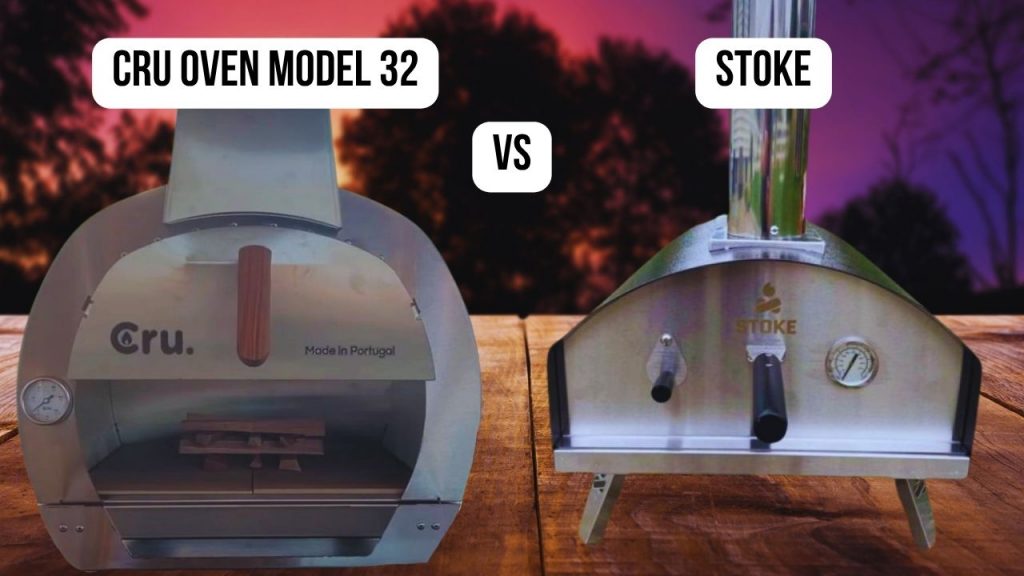
Cru Oven Model 32 VS Stoke: Quality and Materials
| The Cru Oven Model 32 is built in Portugal with high-grade 304 stainless steel, ceramic fiber insulation, and Cordierite stones. Its dual-layer design and robust build give it a premium, long-lasting feel. It’s clear this oven is crafted for durability in heavy-use kitchens. |
The Stoke Wood-Fired Pizza Oven uses decent materials for its price point, but in my kitchen tests, the build quality didn’t quite match higher-end ovens. It’s functional and lightweight, but the materials feel thinner and less insulated than the Cru.
|
Cru Oven Model 32 VS Stoke: Temperature Control
| The Cru Oven Model 32 reaches 900°F with wood or charcoal, and maintains heat well thanks to its dome and airflow design. It performs consistently across multiple bakes with little need for re-fueling. |
Stoke claims to hit 900°F, but in testing, I only reached around 700°F. The large buffer wall between flame and stone limits direct heat transfer, making it harder to hit optimal cooking temps for Neapolitan-style pizza.
|
Cru Oven Model 32 VS Stoke: Shape
| Cru Oven Model 32 features a wide front opening and barrel-shaped stainless steel body that allows for excellent heat circulation and airflow. This leads to even browning and quick bakes. |
The Stoke Oven has a traditional design but includes a high wall separating the fire from the stone, which hinders heat distribution. This design slows down the cooking process and results in less crisp bottoms.
|
Cru Oven Model 32 VS Stoke: First-Time Usage Impressions
| Setting up the Cru Oven Model 32 was very easy. Everything fit perfectly, and I was impressed by the removable dome and the clean, practical layout. Cooking was smooth and intuitive from the start. |
Stoke was also easy to assemble in under 10 minutes. While it was user-friendly, my first bake was underwhelming — the bottom crust didn’t crisp up as expected, even after a long preheat.
|
Cru Oven Model 32 VS Stoke: Power Source
| The Cru Oven Model 32 runs on wood or charcoal, offering authentic wood-fired flavor and versatility. I use only wood for that smoky aroma, and the results are always satisfying. |
The Stoke Wood-Fired Pizza Oven is available in both wood and gas models. I used the wood version, which delivers nice flavor but requires more effort and doesn’t retain heat as well as Cru.
|
Cru Oven Model 32 VS Stoke: Size
| Cru’s cooking space is larger, with a 20″x16″ surface and 11.8″ opening — perfect for large pizzas, meat dishes, or baking bread. The dome gives you height to work with tall items. |
Stoke is smaller and more compact, at around 13″ long cooking surface. Its light weight is great for portability, but the limited space restricts the types of dishes you can cook.
|
Cru Oven Model 32 VS Stoke: Ease of Cleaning
| Cleaning the Cru Oven Model 32 is one of its strong points. The removable dome gives you complete access inside, and the Cordierite stones are easy to take out and clean. |
Stoke’s cleaning process is straightforward, thanks to the simple interior. However, there’s no removable dome, which makes deep cleaning a bit trickier in the long run.
|
Pizza Cooking Test

When it comes to the actual pizza test, I prepared the same Margherita pizza in both ovens to compare how quickly each one heated up, how fast the pizza cooked, and — most importantly — how it tasted.
After lighting the wood fire, the Cru Oven Model 32 took around 40 minutes to reach 800°F on the stone, slightly longer than the manufacturer’s claimed 30 minutes. Once the temperature was right, I slid the Margherita pizza in and used a half-door to retain heat. The pizza baked in about 90 seconds, with evenly blistered crust and beautifully melted cheese. The bottom came out crisp with those classic leopard spots, and the flavor was rich, smoky, and authentically wood-fired. This is the kind of result I aim for in my restaurant kitchen.
The Stoke oven needed about 45 minutes to warm up, and the stone topped out at around 700°F. That’s below ideal for Neapolitan-style pizza, and it showed in the cooking. My Margherita took over 2 minutes to finish. While the top cooked fine and the cheese melted nicely, the crust was pale and lacked that satisfying crunch underneath. The flavor was still good, thanks to the wood fire, but it lacked the boldness and texture I got from the Cru.
In short, both ovens made tasty pizza — but the Cru Oven Model 32 delivered a faster bake, better texture, and more balanced flavor, especially if you love that crispy, smoky edge.
How We Tested the Cru Oven Model 32 and Stoke Pizza Oven
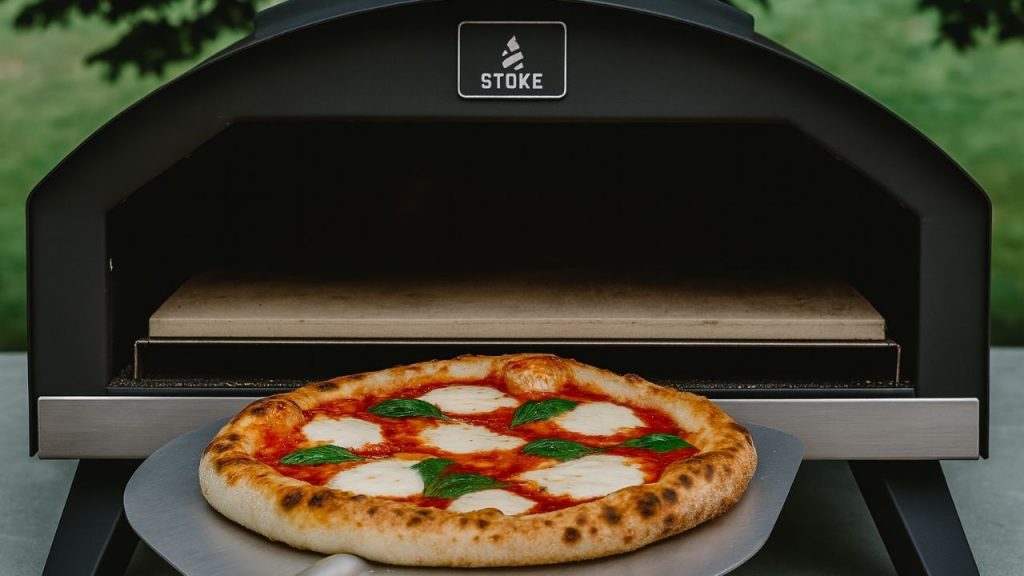
As a restaurant chef with over 10 years of hands-on experience at my kitchen in Dequte Restaurant LironBoylston, I rely on consistency, speed, and quality when it comes to outdoor pizza ovens. For this comparison, I used both the Cru Oven Model 32 and the Stoke Wood-Fired Pizza Oven under the same real-life cooking conditions I’d use at work.
I tested each oven outdoors on a calm day with minimal wind, using the same type of wood fuel, same dough recipe, and identical Margherita toppings. I tracked how long each oven took to heat up, monitored internal and stone temperatures with a laser thermometer, and documented how evenly and quickly each pizza baked. I also evaluated the crust texture, cheese melt, and flavor.
Beyond just the pizza itself, I assessed the usability of each oven from unboxing and setup to cleaning after use. I took notes on the quality of materials, build design, insulation, and how easy each oven was to maneuver, assemble, and maintain.
My goal was simple: to compare these two ovens in a fair and honest way — just like I would when testing any equipment for use in a professional kitchen.
Conclusion
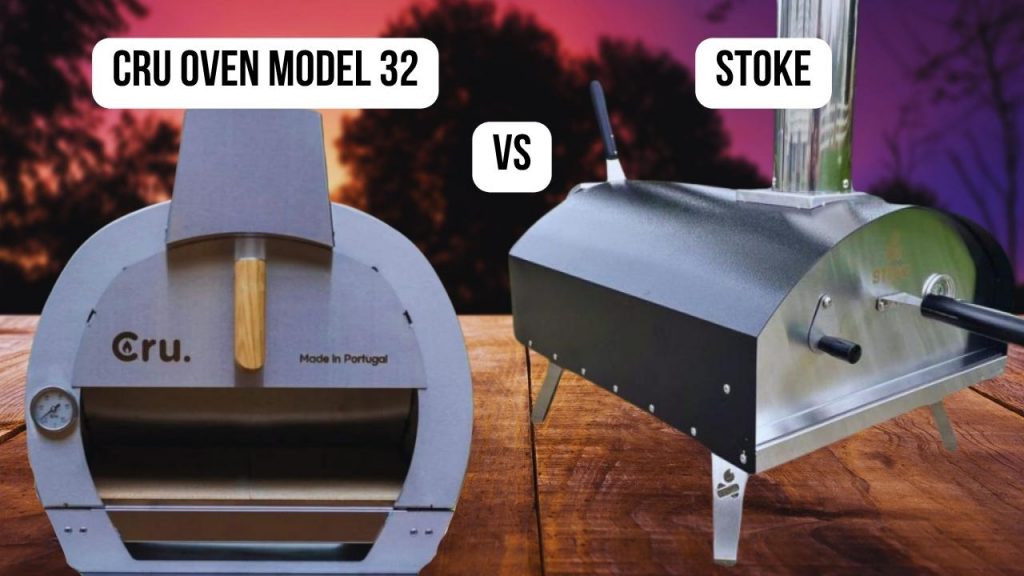
At the end of the day, whether you choose the Cru Oven Model 32 or the Stoke Wood-Fired Pizza Oven depends on what you value most — versatility and high-end materials, or affordability and simplicity. Both ovens have their strengths, but if you’re leaning toward one, I hope my real-life tests helped you decide.
If you do decide to buy one, I’d really appreciate it if you used my referral links — I’ll earn a small commission at no extra cost to you, which helps keep this blog alive.
Explore our guide to the best pizza ovens.

